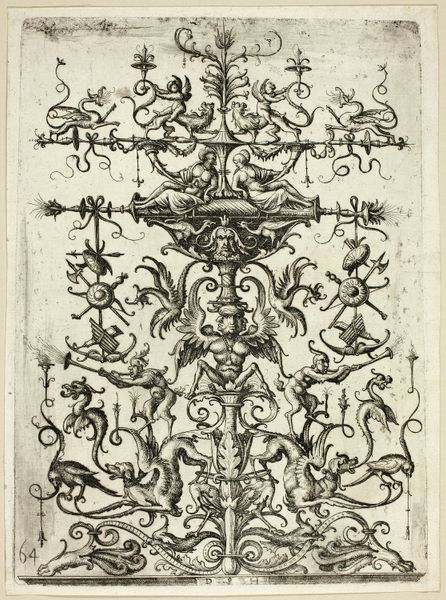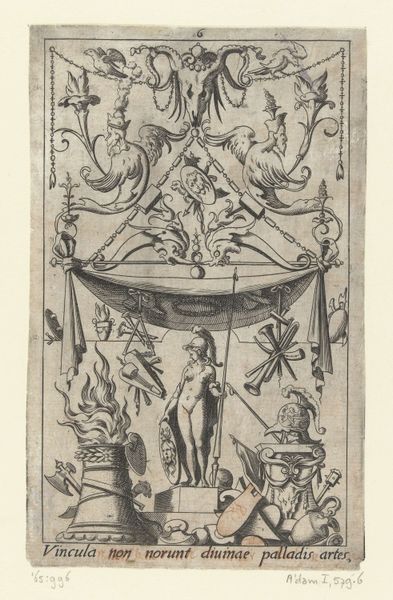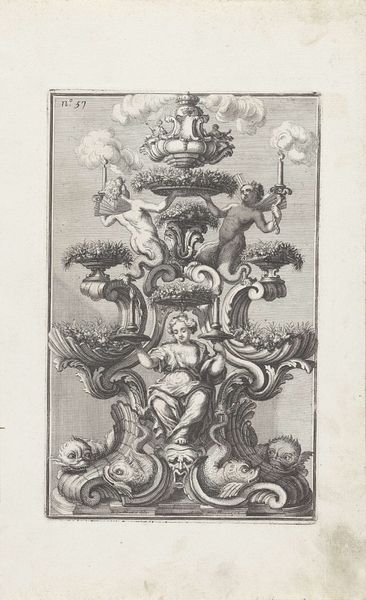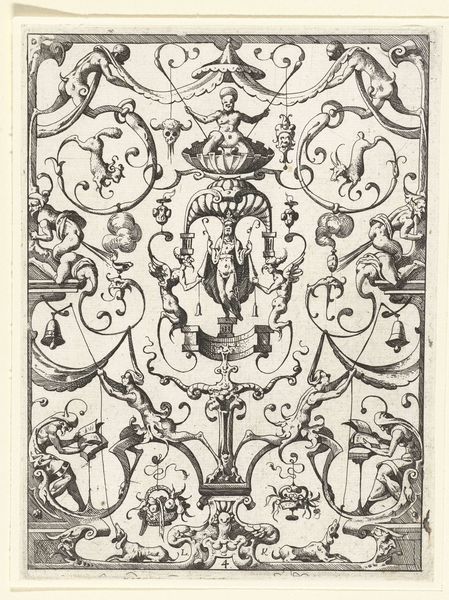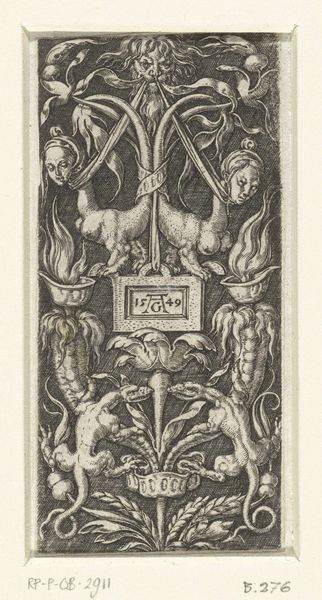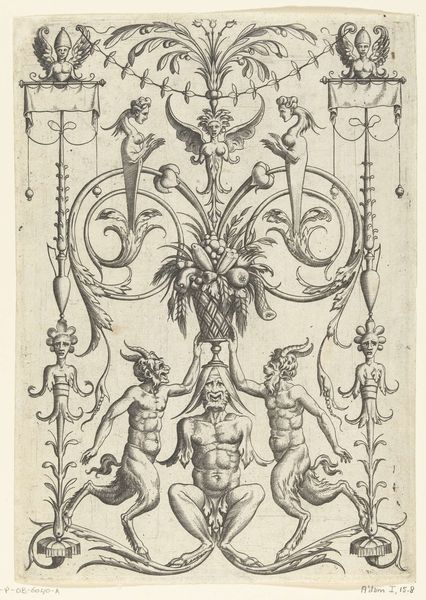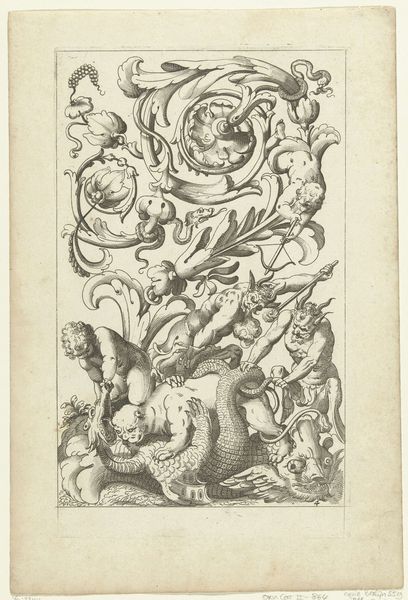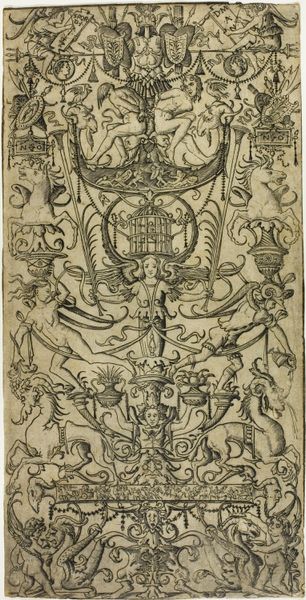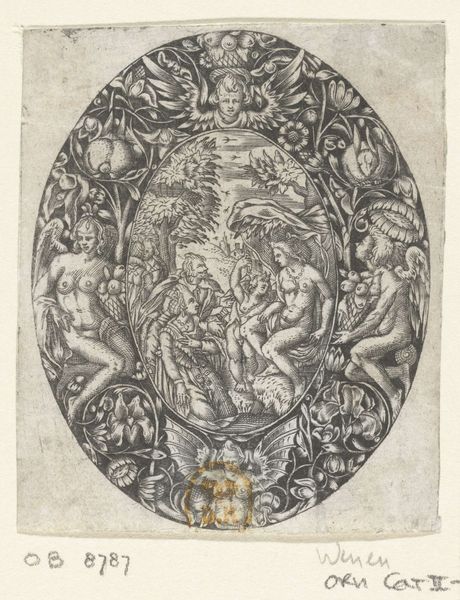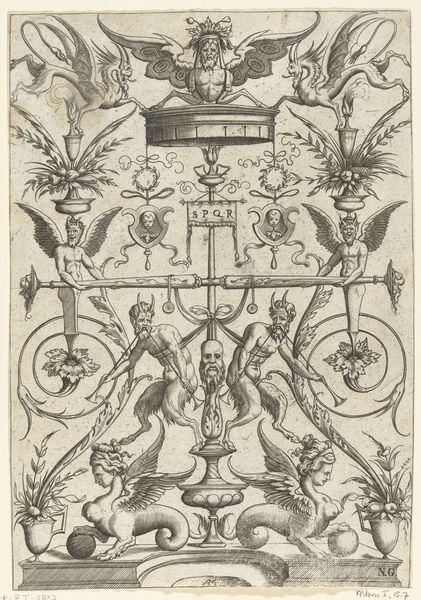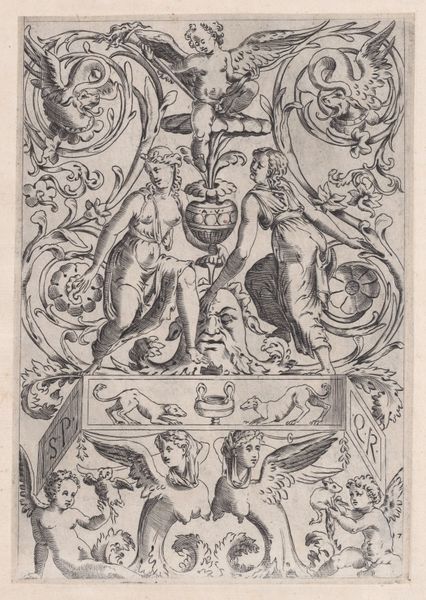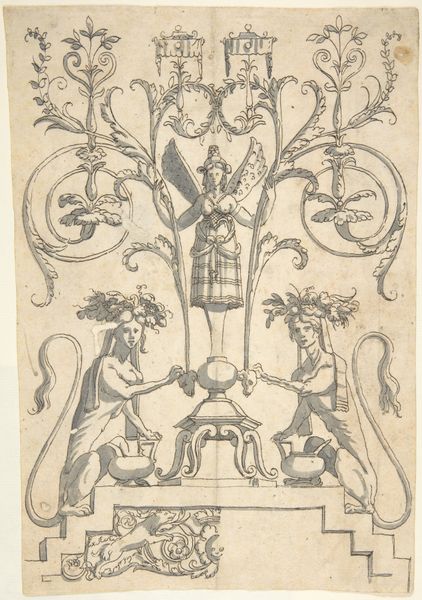
drawing, print, engraving
#
drawing
# print
#
11_renaissance
#
geometric
#
engraving
Dimensions: sheet: 11 5/16 x 3 9/16 in. (28.8 x 9 cm) plate: 10 13/16 x 3 1/16 in. (27.5 x 7.8 cm)
Copyright: Public Domain
This Candelabra grotesque was created by Daniel Hopfer around the late 15th to early 16th century, using etching on iron. Hopfer was a pioneer of this technique, which allowed for relatively quick reproduction of images. The etching process involves covering a metal plate with a waxy, acid-resistant ground. The artist then scratches an image into the ground, exposing the metal. When the plate is dipped in acid, the exposed lines are eaten away, creating grooves that hold ink. The plate is then cleaned, inked, and pressed onto paper, transferring the image. The grotesque style, with its fantastical creatures and elaborate ornamentation, reflects the cultural fascination with the classical world during the Renaissance. But this wasn’t just about aesthetics. The repeatable nature of printmaking, and the relatively low cost of iron, meant that these images could circulate widely, influencing design and taste across Europe, and generating revenue for artists like Hopfer. So, while the image itself may seem whimsical, it’s important to remember the material processes and economic realities that made its creation and dissemination possible.
Comments
No comments
Be the first to comment and join the conversation on the ultimate creative platform.
